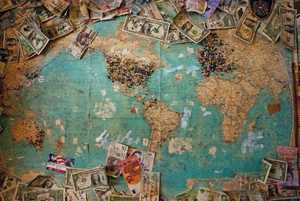What is Modern Monetary Theory
Modern Monetary Theory is a branch of monetary economics that seeks to explain how credit and money are created and flow between economic agents and the consequences to the macro economy due to the nature of such flows.
Modern Monetary Theory or Modern Money Theory (MMT) is a heterodox[1][2][3][4][5][6] macroeconomic theory that describes currency as a public monopoly and unemployment as evidence that a currency monopolist is overly restricting the supply of the financial assets needed to pay taxes and satisfy savings desires.[7][8]
MMT is an alternative to mainstream macroeconomic theory. It has been criticized by well known economists but is claimed by its proponents to be more effective in describing the global economy in the years following the Great Recession of 2007–2009.[9][10]
MMT argues that governments create new money by using fiscal policy. According to advocates, the primary risk once the economy reaches full employment is inflation, which can be addressed by gathering taxes to reduce the spending capacity of the private sector.[11] MMT is debated, with active dialogues[12] about its theoretical integrity, the implications of the policy recommendations of its proponents, and the extent to which it is actually divergent from orthodox macroeconomics.
Share this post
Helio is a staff writer and frontend developer as well as monetary researcher.




